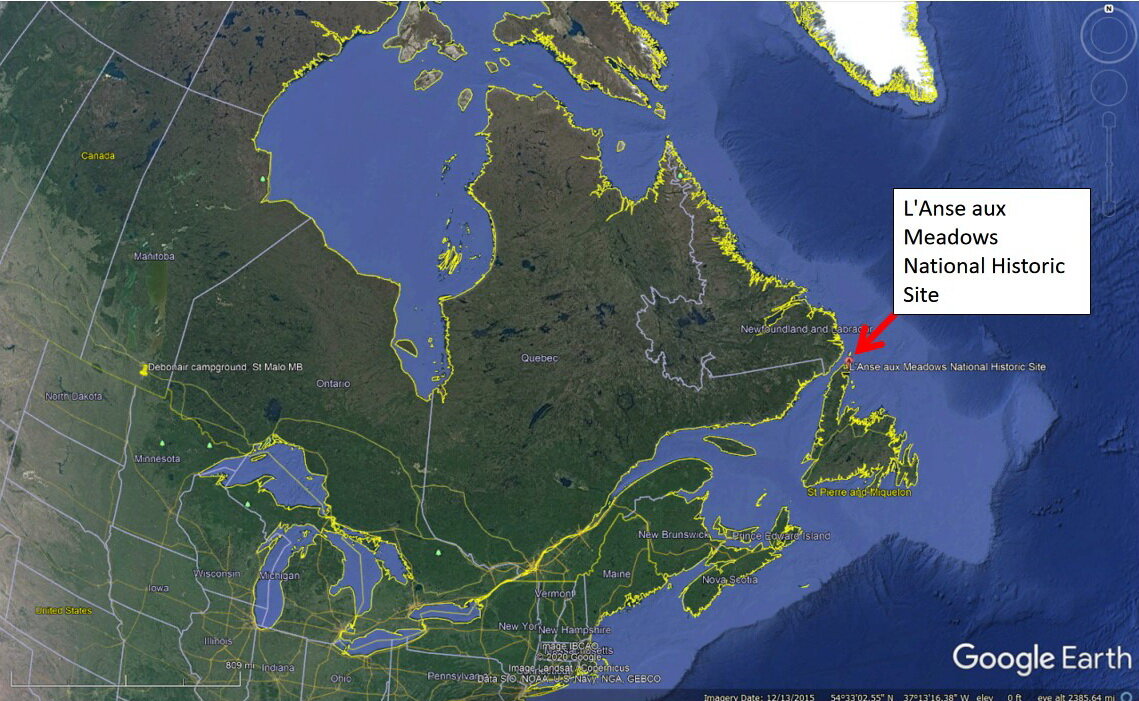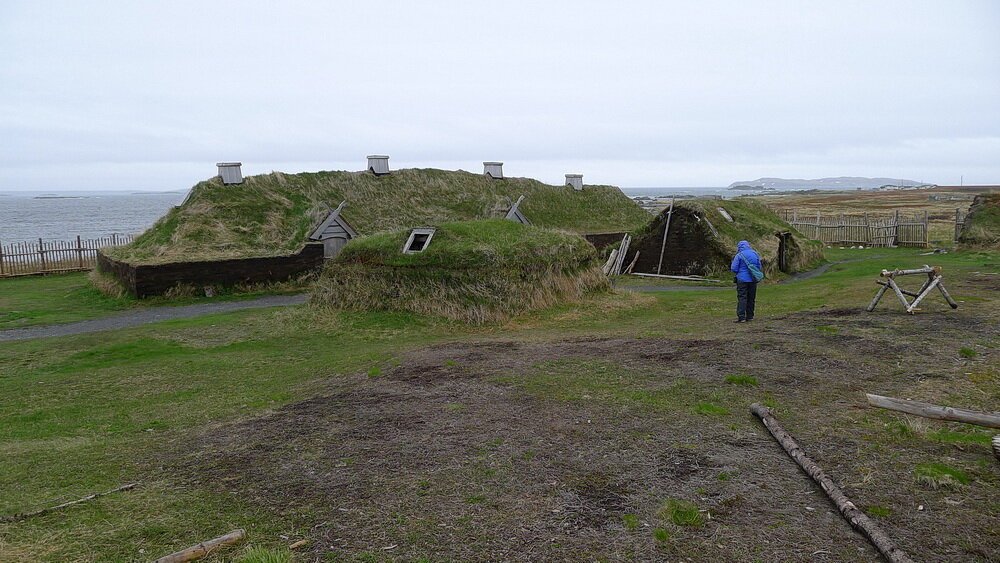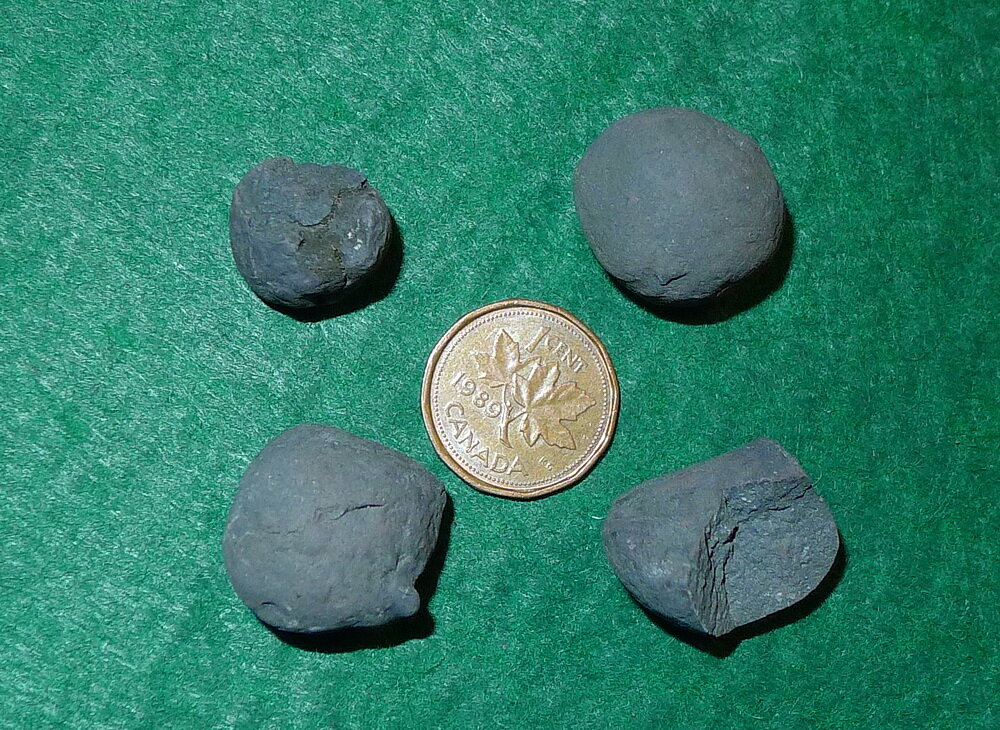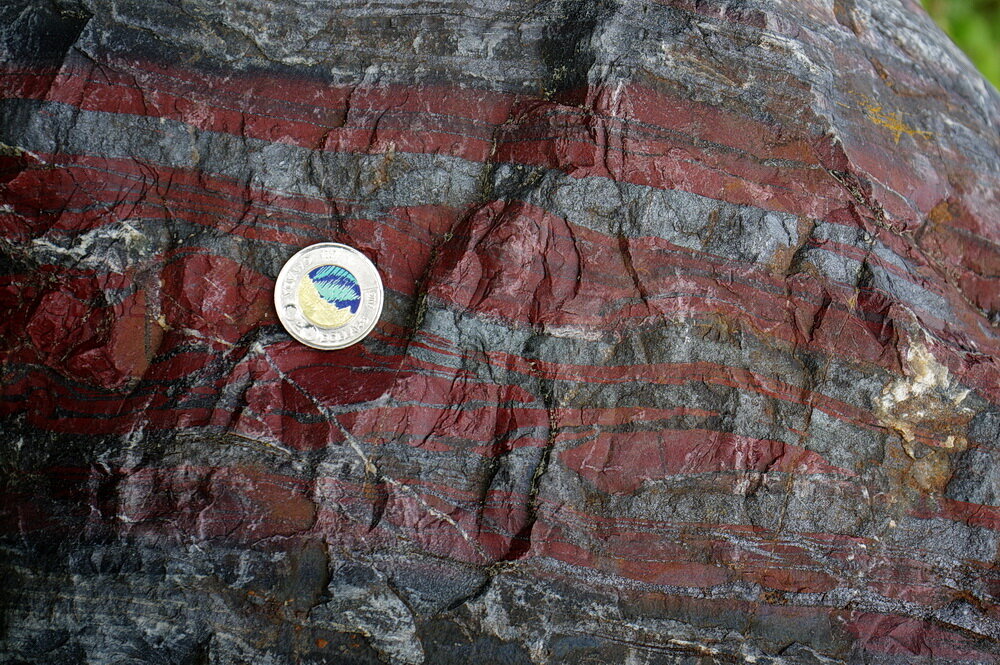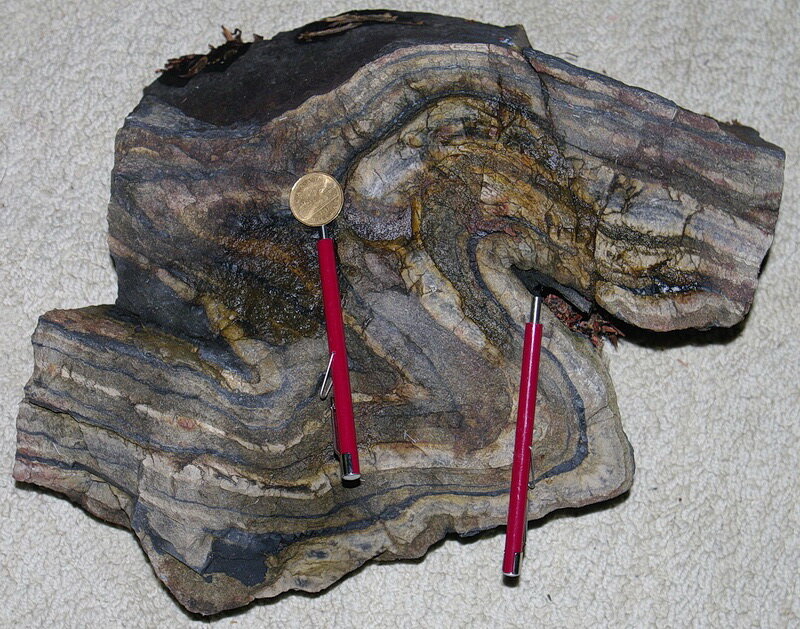Geochemistry: Bog Iron, Culture, History, Natural Resources, and Geology
The Norse people visited North America about 1,000 years ago and established an encampment at a place we now call L’Anse aux Meadows National Historic Site. L’Anse aux Meadows is located at the northern end of the Great Northern Peninsula, on the island of Newfoundland, in the Canadian province of Newfoundland and Labrador (Photo 1).
Photo 1: Location of L’Anse aux Meadows National Historic Site, on the northern tip of the Great Northern Peninsula, island of Newfoundland, in the Canadian province of Newfoundland and Labrador. Google Map image modified.
The L’Anse aux Meadows National Historic Site (Photo 2) was designated as a World Heritage Site in 1978 by the United Nations Educational, Scientific and Cultural Organisation (UNESCO).
Photo 2: A Norse, sod dwelling located at the L’Anse Aux Meadows National Historic Site, on the island of Newfoundland, in the Canadian province of Newfoundland and Labrador. Photo composed on a wet, cold, spring day. Photo by Andy Fyon, June 12, 2011.
There is evidence at L’Anse Aux Meadows that the Norse applied their knowledge of metallurgy to smelt a type of local, natural iron ore to make iron metal, which they used to fashion tools. The smelting knowledge was not new to the Norse at L’Anse Aux Meadows. The Norse had mastered the science of smelting iron to make tools and weapons some 2,500 years ago - at least 1,500 years before the Norse encampment was established at L’Anse Aux Meadows.
This evidence illustrates the marriage culture, history, natural resources, technology, and geology.
Iron
Iron is the most abundant element in the Earth, when we consider the Earth in its totality - from core to crust - because the Earth’s core is mostly made of iron. In contrast, when we consider the Earth’s crust, the thin, outer part of the Earth where we live, only about 5% of the Earth’s crust is made of iron, making iron is the 4th most abundant element in the Earth’s crust after oxygen, silicon, and aluminium.
Iron is important. We use iron to make vehicles, tools, cooking and heating items, steel for buildings and tools, and reinforcement in concrete buildings and roads. Each year, we mine and concentrate (Photo 3) about 2,500,000,000 tonnes of iron to meet our needs.
Photo 3: The black balls are called iron pellets. The pellets are the type of interim product made by concentrating raw iron ore at a mine site. The pellets are shipped to a smelter where they are melted to produce iron metal. These pellets were found on the ground, at a shipping dock, on Goat Island, near Little Current, Manitoulin Island, Ontario. The source of iron pellet is not known. Photo composed by Andy Fyon April 2, 2010.
Increasingly, iron is being recycled. For example, about 70% of all steel is recycled in North America, each year.
Humans started to use iron about 3,000 years ago. Archaeologists call that development the Iron Age.
Where Does Iron Come From?
On the surface of Earth, the iron is found in several forms, including: a) an element bound up in rock-forming silicate minerals, such as hornblende ((Ca,Na)2-3(Mg,Fe,Al)5(Si,Al)8O22(OH,F)2) and pyroxene ((Ca,Na)(Mg,Fe,Al,Ti)(Si,Al)2O6); b) an element bound up in oxide minerals, such as magnetite (Fe3O4) and hematite (Fe2O3); c) as an element in hydrated iron oxide minerals formed by weathering of rock forming iron-bearing minerals, such as goethite (FeO(OH)) and limonite (FeO(OH)·nH2O); d) as iron-rich oxide (e.g., hematite and magnetite) and silicate minerals (e.g., grunerite (Fe7Si8O22(OH)2)) that are restricted to laminated beds in sedimentary rock, called banded iron formation (Photo 4); and e) as impure iron that develops in bogs by chemical and bacterial reactions, called bog iron.
Photo 4 (above): On left is typical hematite (red) - magnetite (black) banded iron formation, from the Sherman Mine, Temagami, Ontario, Canada. On right is chert (white) - magnetite (black) banded iron formation, from northwestern Ontario, Canada. These are typical examples of iron-rich sedimentary rock that are mined for their iron content. Photos by Andy Fyon.
Relevance To L’Anse Aux Meadows
Given evidence that the Norse at L’Anse Aux Meadows extracted bog iron from the local area and smelted that iron to make iron metal, let me explain what bog iron is.
What is a Bog?
A bog is a wetland where peat accumulates. Peat is dead vegetation, consisting of mostly of sphagnum moss. A bog is also informally called mire, quagmire, and muskeg. The moss on some bogs is substrate to stunted shrubs. Bogs occur in areas where drainage is poor. The bog water is acidic, often brown in colour due to concentration of tannins, low in nutrients, and poor in oxygen. There is little movement of water into, or out of, the bog. Melting snow and rain are important sources of water for the bog. These cold, acidic conditions discourage plant decay; hence, dead vegetation builds up on the bottom of the bog, where it accumulates as peat.
How Does Bog Iron Form?
Bog iron forms in bogs as a result of chemical and biological reactions in, and at the surface of, bogs. Subsurface, acidic, bog waters dissolve, transport, and concentrate iron in the oxygen deprived bog. Where iron-rich groundwater flows close to, or onto, the land surface, the iron dissolved in the water reacts with, and is oxidized by, oxygen in the air and/or by iron bacteria, like Thiobacillus ferrooxidans and Thiobacillus thiooxidans, to form iron minerals. The iron minerals cannot stay dissolved in the groundwater, so they fall out, or precipitate, and are concentrated on the surface vegetation, coat the surface of rocks as a stain, or concentrate around groundwater seeps. Perhaps you have seen iridescent sheen on the water’s surface during your travels (Photo 5).
Photo 5: This iridescent sheen on the water’s surface is often misinterpreted as pollution. It is an iron scum formed as the result of bacteria working with atmospheric oxygen to oxidize reduced iron that is carried by the groundwater. Photo of iridescent iron sheen composed at Rock Lake, Algonquin Provincial Park, Ontario, Sept 30/19.
Some misinterpret the iridescent sheen as pollution. The sheen is an iron scum formed as the result of iron oxidation by bacteria working with atmospheric oxygen.
In some places, local creeks run yellow because of tiny iron minerals that are suspended in, and carried by, the creek. The adjacent land is stained orange-red by iron minerals that precipitated out, and coated the surface of the rocks, as a result of oxidation of dissolved, reduced iron (Photo 6).
Photo 6: Example of reduced iron, brought to the surface by groundwater, that has reacted with oxygen in the atmosphere to create tiny iron minerals. Subsurface, acidic, waters dissolve, transport, and concentrate reduced iron in the oxygen deprived bog. Where iron-rich groundwater flows onto the land surface, the reduced iron dissolved in the water reacts with oxygen in the air and with bacteria to form iron minerals. The minerals cannot stay dissolved in the groundwater, so they fall out, or precipitate, and are concentrated on surface vegetation, in seeps, or as coatings on rocks. Engineer Creek / Red Creek, in Yukon, Canada, has a yellow colour because of tiny iron minerals being carried by the creek and the land is stained orange-red by iron minerals formed by this process. Photo composed at Red Creek (Engineer Creek), along the Dempster Highway, Yukon, June 12/19.
So, bog iron forms where reduced iron, carried by groundwater, reacts with iron bacteria and atmospheric oxygen near, or at, the surface of a bog.
L’Anse Aux Meadows Iron Smelting
So, what does this have to do with L’Anse aux Meadows - the Norse historic site on the island of Newfoundland?
The Norse had mastered the science of smelting iron to make tools and weapons some 2,500 years ago. There is evidence that 1,000 years ago, the Norse visitors smelted iron to make nails at L’Anse aux Meadows. The source of the smelted iron at L’Anse aux meadows was bog iron. The type of forge used by the Norse (Photo 7) was likely crude and inefficient, but it was hot enough to melt the iron-rich source to make iron metal.
Photo 7: A recreation of the type of iron smelter forge used by the Norse at L'Anse aux Meadows National Historic Site. Photo composed by Andy Fyon, June 12, 2011.
Signs that the Norse cooked, or smelted, the local bog iron include: a) solid, impure, porous lumps of rusty bog iron material collected from the local bogs; and b) a few heavy pieces of solid iron, called bloom, formed when the bog iron was heated to very high temperatures (Photo 8) in a small furnace.
Photo 8: The small rusty lumps are likely pieces of porous bog iron material collected from the local bogs and/or residue to initial heating of bog iron, found at L’Anse aux Meadows National Historic Site, Newfoundland and Labrador. The large dark coloured lump on the right is a piece of smelted iron, created by cooking the bog iron at a very high temperature, to melt the iron. The Norse visitors to L’Anse aux Meadows understood and practiced smelting metallurgy to make iron, which they used to make iron tools. Photo composed at L'Anse aux Meadows National Historic Site, at the tip of the Great Northern Peninsula, Newfoundland and Labrador, June 12/11.
Geological Epilog
The evidence from L’Anse Aux Meadows illustrates the marriage culture, history, natural resources, technology, and geology. Geological processes concentrated the source iron in bogs. That iron source did not require large-scale mining. The bog iron was collected by hand. The smelting technology was crude, but nevertheless produced iron metal that was fashioned into tools, like nails. The Norse carried with them a knowledge of natural resources and crude smelting, developed over as much as 1,500 years of history before they visited North America. The Norse applied that knowledge to create culturally appropriate tools using the local raw resources.
Have A Question About This Note?
Andy Fyon, Aug 14, 2020; Sept 29/20

